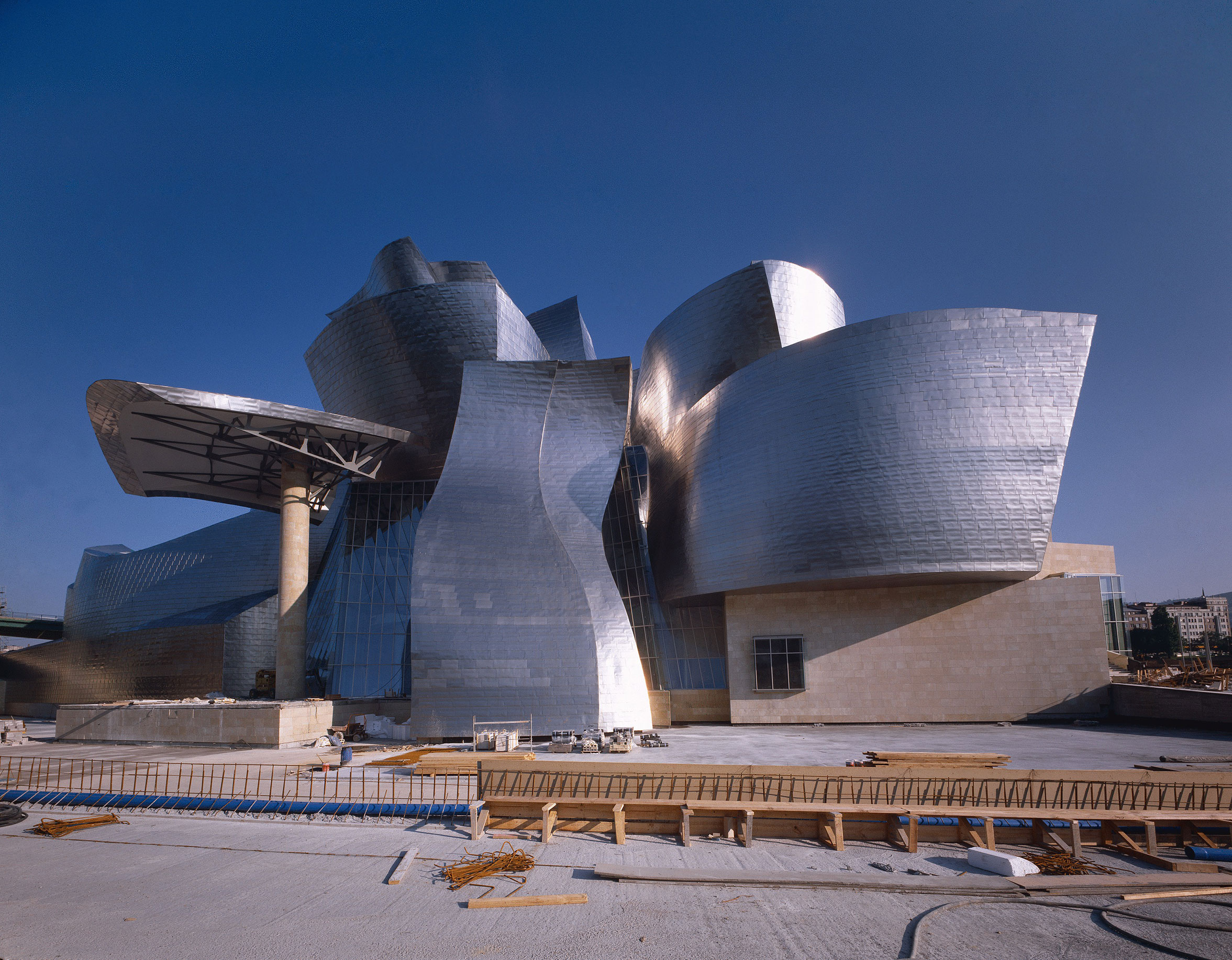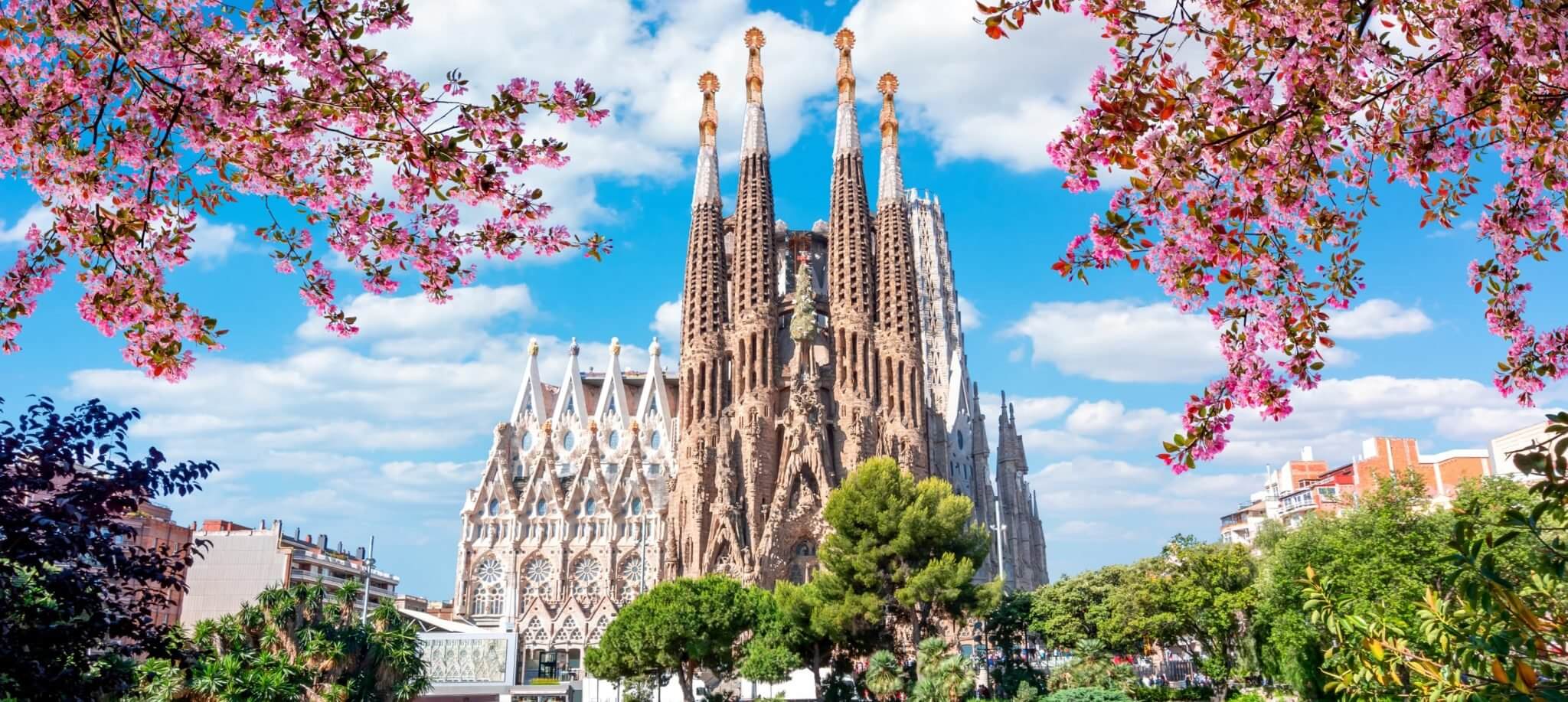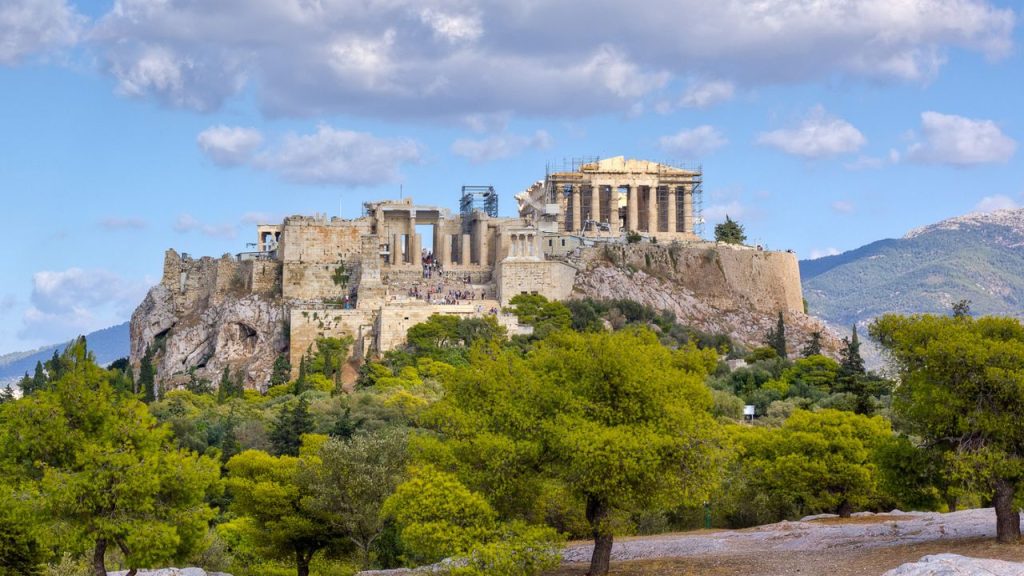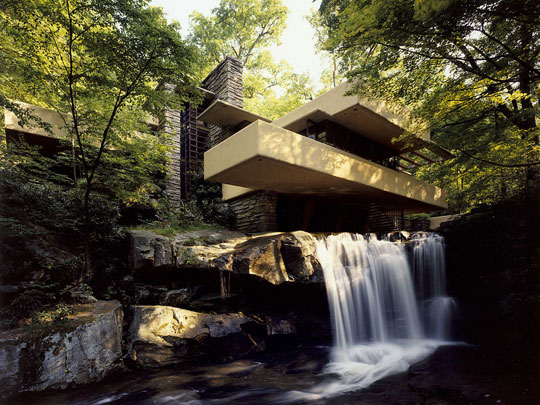10 Must-See Architectural Landmarks Around the World

The Eiffel Tower, Paris, France
Architectural Design and History
The Eiffel Tower, an iconic symbol of Paris, was designed by Gustave Eiffel and completed in 1889 for the Exposition Universelle (World’s Fair). Standing at 1,083 feet, it’s a marvel of iron architecture, showcasing a unique blend of art and engineering. The tower initially faced criticism but has become a beloved landmark.
Visitor Experience and Observation Decks
Visiting the Eiffel Tower is an unforgettable experience. Guests can explore multiple levels:
- 1st Level : Offers restaurants and exhibitions.
- 2nd Level : Features breathtaking views of the city.
- Summit : Provides a mesmerizing panoramic view.
Many find the elevator ride exhilarating, while the spiraled staircase lets adventurers savor the journey. Personal anecdotes abound about couples proposing at the top or families enjoying picnics nearby, making it a memorable spot for gathering magical memories.

The Sydney Opera House, Sydney, Australia
Unique Architecture and Construction Challenges
The Sydney Opera House, with its iconic sail-like design by architect Jørn Utzon, faced numerous hurdles during construction. Completed in 1973, it stands as a testament to innovative architecture despite significant delays and cost overruns.
- Design Elements : The shell-shaped roofs create a distinct silhouette against the harbor.
- Construction Challenges : Complex engineering and techniques were employed to realize Utzon’s vision.
Many remember watching the breathtaking sunset reflecting off its glossy tiles, adding a magical aura that captivates both residents and tourists.
Cultural and Performance Significance
As a cultural hub, the Sydney Opera House hosts over 1,500 performances each year, from opera to theatrical productions. Its vibrant atmosphere often resonates during events like the annual Vivid Sydney festival, transforming the harbor into a luminescent wonderland. Visitors often share stories of unforgettable performances, making it more than just an architectural marvel; it is a vital part of Australia’s cultural identity.

Guggenheim Museum Bilbao , Spain
Frank Gehry’s Architectural Masterpiece
The Guggenheim Museum Bilbao, designed by Frank Gehry, is a stunning example of contemporary architecture that emerged in 1997. Its organic forms and metallic façade create an unforgettable impression on visitors.
- Design Features :
- Titanium cladding reflecting the river’s surface.
- Asymmetrical shapes that evoke movement.
Many people recall wandering its curvilinear halls, feeling as if they were part of an artwork themselves.
Impact on Bilbao’s Transformation
The museum has profoundly transformed Bilbao from an industrial hub into a cultural hotspot. Economically, it has generated:
- Increased Tourism : Attracting millions annually.
- Urban Revitalization : Leading to new restaurants, hotels, and art spaces.
Locals often share how the Guggenheim has revived their pride in the city, breathing new life into communities and invigorating social engagement through art. The experience is not just about the exhibits; it symbolizes Bilbao’s rebirth and resilience.

Taj Mahal , Agra, India
Symbol of Love and Mughal Architecture
The Taj Mahal, often described as the epitome of love, was commissioned by Mughal Emperor Shah Jahan in memory of his beloved wife, Mumtaz Mahal. Completed in 1648, this grand mausoleum features stunning white marble and intricate inlay work, embodying the heights of Mughal architecture.
- Architectural Elements :
- Symmetrical design representing harmony.
- Beautiful calligraphy and floral motifs adorning the walls.
Visitors frequently recount feelings of awe upon witnessing its beauty, especially at sunrise when the marble glows in soft hues.
Gardens and Surrounding Complex
The Taj Mahal is framed by lush gardens that enhance its majestic presence. The Mughal gardens feature neatly manicured lawns and water channels that symbolize the paradise described in Islamic texts.
- Key Features :
- Charbagh layout, symbolizing the four rivers of paradise.
- Reflection pool that mirrors the Taj Mahal’s beauty.
Many remember strolling through these picturesque gardens, capturing memorable photographs as they connect with the serene ambiance. This complex is more than just a tomb; it’s an immersive experience that reflects a rich cultural heritage and an enduring tale of love.

Burj Khalifa , Dubai, United Arab Emirates
Tallest Building in the World
Standing tall at 828 meters, the Burj Khalifa is not just the tallest building in the world but a beacon of human ingenuity. Completed in 2010, it redefines the skyline of Dubai and attracts millions of visitors eager to witness its grandeur.
- Height Milestones :
- Features 163 floors and 2 additional levels in the basement.
- Offers breathtaking views from its observation decks on the 124th and 148th floors.
Visitors often talk about the exhilarating experience of watching the sunset from its heights, as the city transforms beneath their feet.
Design and Engineering Marvel
The Burj Khalifa showcases a unique blend of art and engineering, designed by Adrian Smith of Skidmore, Owings & Merrill. Its Y-shaped footprint provides stability and a stunning aesthetic.
- Engineering Features :
- Reinforced concrete core to withstand high winds.
- State-of-the-art elevator system, the fastest in the world.
Many marvel at how this towering achievement pushes the boundaries of modern architecture. Whether gazing up from the ground or appreciating the intricate details within, the Burj Khalifa exemplifies the future of urban design while inspiring awe in those who experience it.

Sagrada Familia, Barcelona, Spain
Antoni Gaudí’s Unfinished Masterpiece
The Sagrada Familia is a breathtaking basilica designed by Antoni Gaudí, which began construction in 1882 and remains unfinished to this day. This monumental structure is a testament to Gaudí’s visionary genius and dedication to his craft.
- Architectural Highlights :
- Unique combination of Gothic and Art Nouveau styles.
- Intricate facades depicting the life of Christ.
Visitors often share their astonishment upon seeing the towering spires and vibrant stained glass windows, which create a truly enchanting experience.
Organic Architecture and Symbolism
Gaudí’s approach to architecture incorporates natural forms and advanced engineering techniques, molding shapes inspired by nature. Every element of the Sagrada Familia tells a story.
- Symbolic Elements :
- Columns resembling trees that branch out to support the roof.
- Facades filled with symbolism, representing the Nativity and Passion of Christ.
Personal experiences abound as visitors feel a deep sense of connection with the intertwining themes of faith and nature. The Sagrada Familia is not just a building; it is an evolving narrative that continues to inspire and captivate the hearts of all who visit.

The Colosseum, Rome, Italy
Ancient Roman Amphitheater History
The Colosseum, an iconic symbol of Rome, was completed in AD 80 under Emperor Vespasian. This grand amphitheater was primarily used for gladiatorial contests and public spectacles, showcasing the might and culture of the Roman Empire.
- Historical Significance :
- Could accommodate around 50,000 spectators.
- Featured various forms of entertainment, including animal hunts and naval battles.
Many visitors share stories of standing in its vast arena, imagining the roar of the crowd and the excitement of ancient events unfolding before them.
Architecture and Engineering Innovations
The Colosseum is a marvel of ancient engineering with revolutionary architectural features that have stood the test of time. Its elliptical design and intricate systems demonstrate the ingenuity of Roman builders.
- Key Innovations :
- Use of concrete and stone, which enhanced durability.
- Complex system of vaults that supported the structure.
Exploring the Colosseum, many feel a deep connection to history, marveling at how such engineering feats were achieved without modern technology. This magnificent structure remains a testament to the innovation of ancient Rome, continuing to draw millions who seek to understand its legacy and significance.

The Acropolis, Athens, Greece
Historical Importance and Architectural Significance
The Acropolis of Athens stands as a powerful symbol of ancient Greek civilization, embodying the ideals of democracy, philosophy, and art. Dating back to the 5th century BC, it has been a central point for historical discourse and cultural evolution.
- Cultural Heritage :
- Recognized as a UNESCO World Heritage site since 1987.
- It served as a religious sanctuary dedicated to Athena, the city’s patron goddess.
Visitors often describe ascending the steps of the Acropolis as a transformative experience, where the weight of history envelops them.
Parthenon and Other Structures
At the heart of the Acropolis lies the Parthenon, an architectural masterpiece dedicated to Athena Parthenos. Its majestic columns and intricate sculptures exemplify the pinnacle of Doric architecture.
- Notable Features :
- The friezes depict mythological battles, illustrating Athenian values.
- Other structures include the Erechtheion and the Temple of Athena Nike.
Walking through these ancient ruins, many feel a profound connection to history and artistic achievement. The Acropolis invites admiration and introspection, serving as a reminder of Greece’s lasting impact on art and culture throughout the ages.

The Forbidden City, Beijing, China
Imperial Palace Complex
The Forbidden City, a sprawling imperial palace complex, served as the heart of Chinese imperial power for nearly 500 years. Constructed in the early 15th century during the Ming dynasty, it housed 24 emperors and is rich in historical significance.
- Key Features :
- Enclosed by a massive wall and a moat.
- Covering approximately 180 acres with over 900 buildings.
Visitors often reminisce about the sense of awe they felt walking through the imposing gates of this grand complex, which once resonated with royalty and intrigue.
Traditional Chinese Architecture
The architecture of the Forbidden City is a stunning representation of traditional Chinese designs, characterized by harmonious proportions and vibrant colors. Each structure follows strict principles, reflecting the ancient Chinese cosmological worldview.
- Architectural Highlights :
- Use of yellow tiles symbolizing imperial authority.
- Elaborate wooden brackets supporting the roofs, enhancing stability.
Exploring the intricate details of the roofs and courtyards, many find themselves immersed in the beauty of Chinese culture and history. The Forbidden City is not just a magnificent architectural wonder; it is a journey into the rich tapestry of China’s imperial legacy that continues to inspire visitors from around the world.

Fallingwater, Pennsylvania, USA
Frank Lloyd Wright’s Organic Architecture
Fallingwater, designed by Frank Lloyd Wright in 1935, is an iconic example of organic architecture that harmonizes with its natural surroundings. This masterpiece embodies Wright’s philosophy of blending structures seamlessly into the landscape.
- Design Features :
- Cantilevered terraces that extend over a waterfall.
- Natural materials like stone and wood incorporated into the construction.
Visitors often express their amazement at how the home feels as if it grows from the rock itself, rather than being built upon it.
Integration with Nature and Waterfall Relationship
The most striking feature of Fallingwater is its intimate relationship with the waterfall it overlooks. Wright designed the home to immerse its occupants in the sights and sounds of nature.
- Key Aspects :
- Large windows allowing for panoramic views of the surrounding forest.
- The sound of the waterfall permeating the living spaces, creating a serene environment.
Many share personal experiences of tranquility while visiting, finding peace in the home’s connection to nature. Fallingwater is not just an architectural wonder; it’s a celebration of nature’s beauty, showcasing how design can elevate our relationship with the environment.




